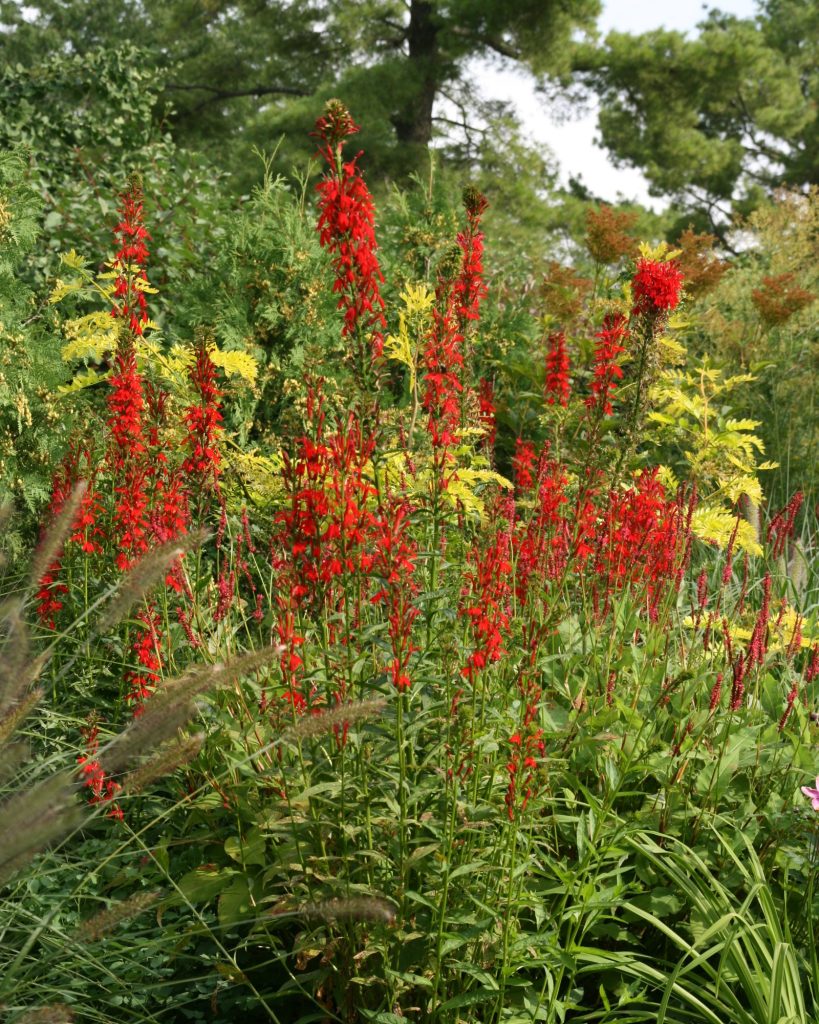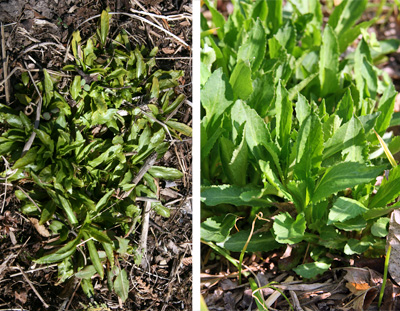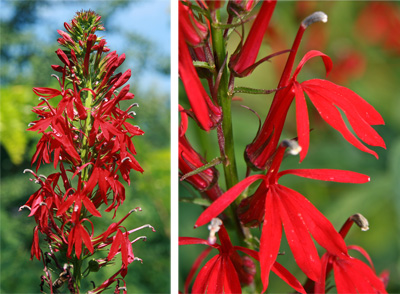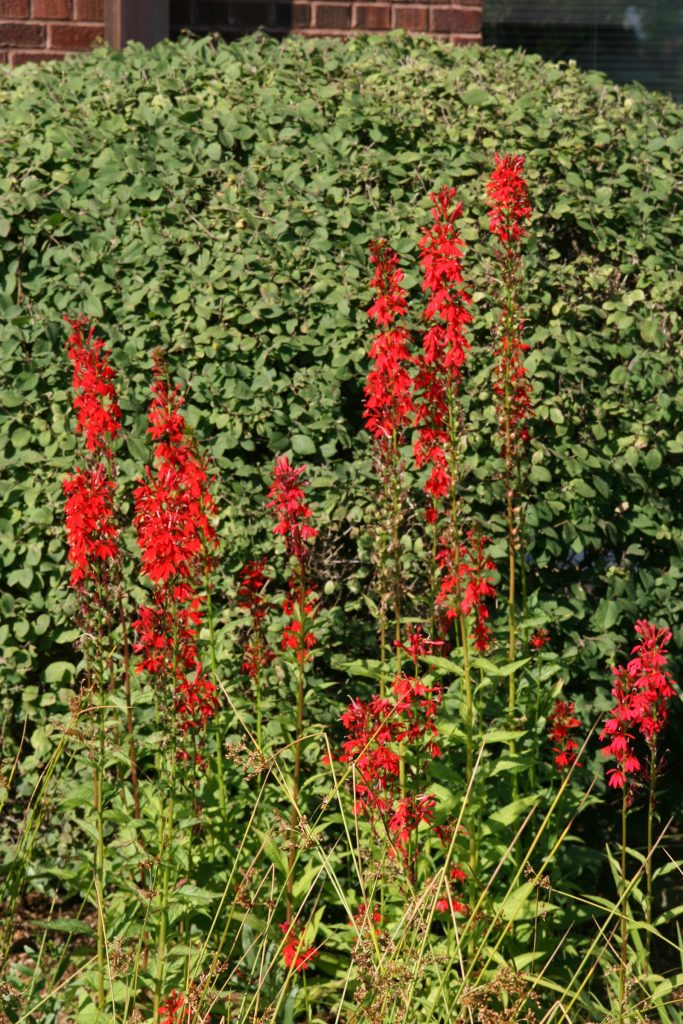Overview of Cardinal Flower
Cardinal flower, Lobelia cardinalis, is a native perennial often used as an ornamental garden plant. This showy species in the bellflower family (Campanulaceae) has a wide distribution, throughout the eastern US (including Wisconsin and Minnesota) and from southeastern Canada through Mexico and Central America to northern Colombia in South America. It is found in moist soils, including wet open woods, streambanks, swamps and marshy areas. It was introduced to Europe in the mid 1620’s where it earned its common name, likely because the bright red flowers – variously described as scarlet, crimson, or vermilion – are the same color as the vestments worn by Roman Catholic cardinals. Cardinal flower is hardy in zones 3-9.
Cardinal flower produces clumps of basal leaves, with alternate, medium green or slightly bronzed or purple-tinged lanceolate leaves, up to 6″ long, with toothed margins and may be very shiny. Leafy inflorescences ranging from 3-6 feet tall appear from midsummer to fall.
Each erect terminal raceme is covered with numerous five-lobed flowers. The flowers open from the bottom to the top over a period of several weeks. Each 1-2″ flower has three spreading lower petals and two upper petals that are all combined into a tube at the base. Petals are generally a brilliant red, although some white or pink forms occur in nature.
The bright red flowers are pollinated by hummingbirds, which are readily attracted, along with butterflies and bees. Cardinal flower is also good for cut flowers, but the stems do have a milky sap. Flowers are followed by capsules containing numerous tiny seeds; under the right conditions cardinal flower will readily self-seed.
Landscape Use
Use cardinal flower in borders, rain gardens, and native gardens, especially on the edges of streams or ponds. They will naturalize in moist meadows and can be grown in a shallow water garden or in containers. The deep pure red flowers may be difficult to combine with other reds but it mixes well with many other moisture-loving plants that bloom in other colors.
Cardinal flower combines well with great blue lobelia (another native, L. silphitica, which blooms about the same time), irises, marsh milkweed (Asclepias incarnata), monkeyflower (Mimulus sp.) and rose mallow (Hibiscus moscheutos). Other native plants it may be found with include purple coneflower (Echinacea purpurea), blazing star (Liatris spp.), and Penstemon digitalis (foxglove beardtongue).
General Care of Cardinal Flower
Lobelia cardinalis is easily grown in moist soils in full sun to partial shade. It has few pests and is not favored by deer or rabbits. Flower stalks may need to be staked depending on the exposure to strong winds. It is considered a short-lived perennial, and dividing plants every few years helps them to persist in the garden.
Propagation of Cardinal Flower
Cardinal flower can be propagated by division, removing the young plants that develop around the perimeter of established clumps, or can be grown from seed. Plants often reseed on their own, or seed can be sown on the soil surface (the tiny seed needs light to germinate).
– Susan Mahr, University of Wisconsin – Madison
Last Update: Bruce Spangenberg, UW-Madison Extension, 2025










 Landscaping Alternatives for Common Invasive Wetland and Aquatic Plants
Landscaping Alternatives for Common Invasive Wetland and Aquatic Plants ▶︎ Watch: Hydrangeas: Know Them and Grow Them
▶︎ Watch: Hydrangeas: Know Them and Grow Them ▶︎ Watch: Fall Bulb Planting
▶︎ Watch: Fall Bulb Planting Aster, Symphyotrichum spp.
Aster, Symphyotrichum spp.


